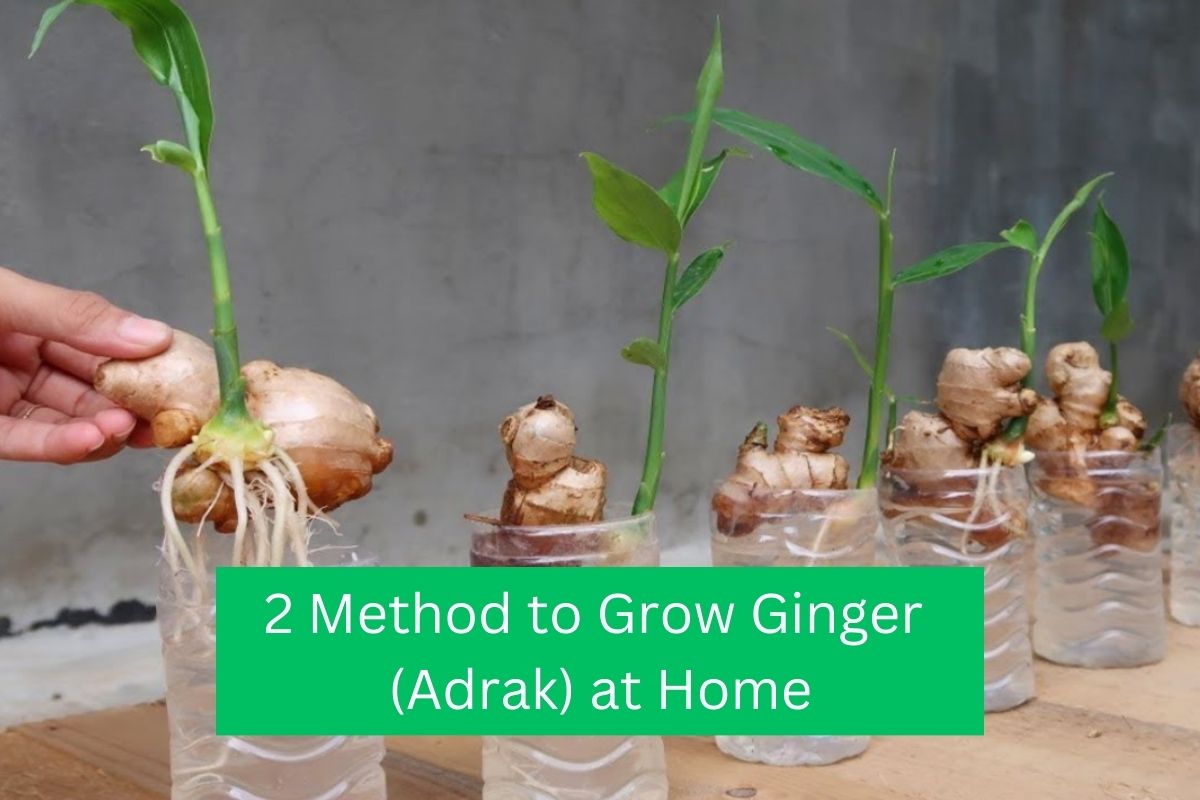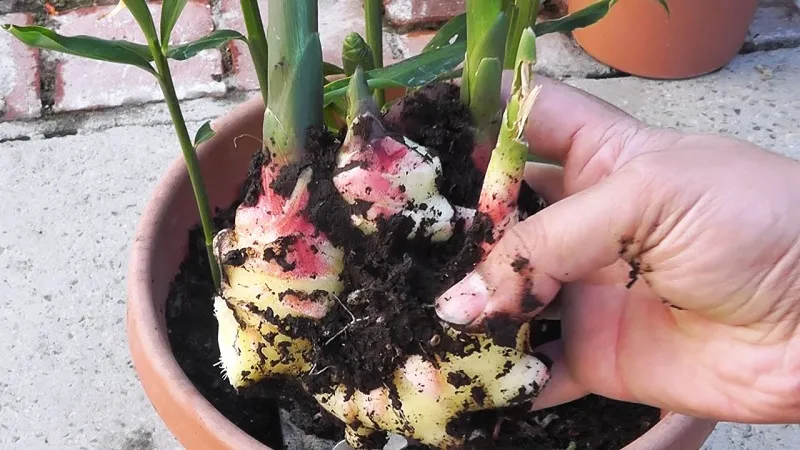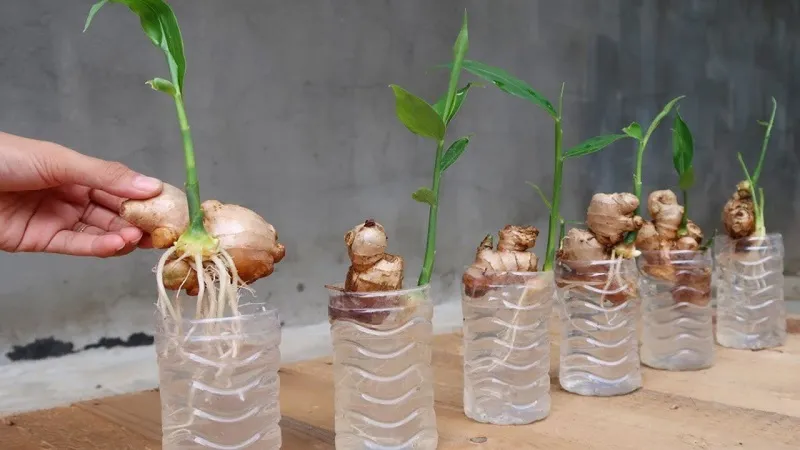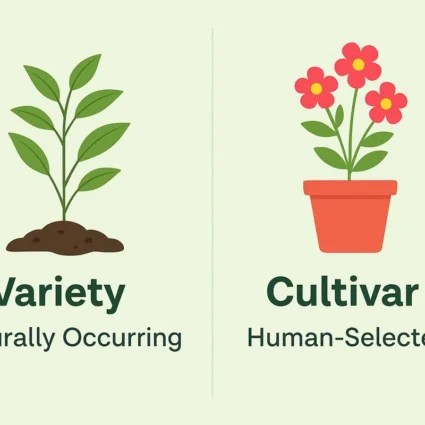
2 Method to Grow Ginger (Adrak) at Home
Ginger (Zingiber officinale) is a versatile and flavorful spice that can be quickly grown at home, whether you have a garden or limited space for indoor gardening. This guide will help you get started on your journey to grow and harvest your own fresh ginger.
Certainly! Growing ginger (Adrak) at home can be a rewarding experience. Here are two methods to grow ginger in your home garden or indoors:
2 Method to Grow Ginger (Adrak) at Home
- Growing Ginger in Soil
- Growing Ginger in Containers or Jars of Water (as a novelty)
Growing Ginger in Soil:
This is the traditional method of growing ginger, which allows you to cultivate a complete ginger plant with rhizomes.
Materials Needed:
- Fresh ginger rhizomes with visible growth buds.
- A suitable garden spot or large containers.
- Well-draining potting soil.
- Compost or organic matter.
- Fertilizer (balanced, slow-release or liquid).
- Mulch (e.g., straw or wood chips).

Step 1 : Select a Planting Location or Container
- Choose a spot with well-draining soil and partial shade if you have a garden.
- For indoor gardening, use a large container with good drainage.
Step 2 : Prepare the Soil
- Mix the potting soil with compost or organic matter to enrich it.
- Ensure proper drainage by adding gravel or sand if needed.
Step 3 : Select Ginger Rhizomes
- Choose fresh ginger rhizomes with visible growth buds.
Step 4 : Plant Ginger Rhizomes
- Plant ginger rhizomes about 1-2 inches deep in the soil, with the growth buds facing up.
- Space them at least 6-8 inches apart.
Also Read This :Protect Your Pooch: A Comprehensive Guide to Poisonous Plants for Dogs
Step 5 : Watering
- Keep the soil consistently moist but not waterlogged. Water deeply and regularly.
Step 6 : Light and Temperature
- Ginger prefers partial shade, so choose a location with indirect sunlight.
- Maintain a temperature of 75-85°F (24-29°C).
Step 7 : Fertilizing
- Apply a balanced fertilizer as directed, typically during the growing season (spring and summer).
Step 8 : Mulching
- Add a layer of mulch to retain moisture and prevent weeds.
Also Read This :How to Propagate Roses Using Potato Cuttings
Step 9 : Harvesting
Ginger is usually ready for harvest in 8-10 months. Dig up the rhizomes, cut off what you need, and replant the rest.
Growing Ginger in Containers or Jars of Water (as a novelty):
This method is suitable for growing ginger as an interesting indoor project but will only produce a part of the plant.
Materials Needed:
- Fresh ginger rhizomes with visible growth buds.
- Clear glass or jars.
- Toothpicks or skewers.
- Water.
- Plastic wrap or breathable cloth.

Also Read This :Fascinating Plant Fun Facts
Step 1: Prepare Ginger Rhizomes
- Cut fresh ginger rhizomes into smaller sections, ensuring each has a growth bud.
Step 2: Soak Ginger in Water
- Place the ginger sections in a glass or jar with water, keeping the growth buds above water.
Step 3: Support with Toothpicks or Skewers
- Insert toothpicks or skewers into the rhizome sections to prevent them from sinking.
Step 4: Cover and Place in a Warm Spot
- Cover the container with plastic wrap or cloth and put it in a warm, indirect sunlight location.
Step 5: Maintain Water Level
- Check and maintain the water level to keep the ginger partially submerged.
Also Read This :Enhance Your Gardening with Grow Bags
Step 6: Observe Growth
- You should see roots and shoots emerge in a few weeks to a couple of months.
Step 7: Transplant or Harvest
- Once roots and shoots are established, you can transplant them into the soil or harvest young ginger.
Remember, growing ginger in water is primarily a fun and educational project. To develop a complete ginger plant, you’ll need to transfer it to soil eventually.
How to take care of a Ginger plant?
Growing and caring for a ginger plant (Zingiber officinale) can be a rewarding experience. Ginger is a tropical plant that can be grown in a pot or indoors in non-tropical climates. Here are the steps to grow and care for a ginger plant:
Also Read This :Utilizing Grow Lights for Indoor Plant Cultivation
Caring for Your Ginger Plant
Light: Ginger prefers partial shade or filtered sunlight. Place it near a bright, indirect light source if you’re growing it indoors.
Temperature: Ginger thrives in warm, tropical conditions. Maintain a temperature of 75-85°F (24-29°C). Avoid cold drafts and sudden temperature drops.
Watering: Keep the soil consistently moist but not waterlogged. Water when the top inch of soil feels dry. Reduce watering in the winter when growth slows.
Humidity: Ginger plants appreciate high humidity. You can increase humidity around the plant by misting it or placing a water tray nearby.
Fertilizing: Fertilize your ginger plant with a balanced, slow-release fertilizer or a liquid fertilizer diluted to half strength. Apply every 4-6 weeks during the growing season (spring and summer).
Mulching: Apply a layer of organic mulch, like straw or wood chips, to retain soil moisture and suppress weeds.
Pruning: Remove dead or yellowing leaves to maintain plant health and appearance.
Also Read This :How to Prune Lavender: A Step-by-Step Guide
Harvesting Ginger:
Ginger plants take around 8-10 months to mature. You can harvest ginger in two ways:
Young Ginger
You can harvest ginger when the plant is around 3-4 months old for a milder, tender flavour. Dig up the rhizomes, cut what you need, and replant the remaining rhizomes.
Mature Ginger
Wait until the plant is fully mature (8-10 months) for a more robust, pungent flavour. Carefully dig up the entire plant and harvest the rhizomes.
Also Read This :Seasonal Planting: What to Plant in October for Success
Common Issues:
Pests
Watch for pests like aphids, spider mites, and mealybugs. Treat infestations promptly.
Diseases
Ginger plants can be susceptible to fungal diseases. Ensure good airflow and avoid overwatering to prevent fungal issues.
You can enjoy a steady supply of fresh ginger at home with proper care. Growing ginger is a rewarding and educational experience for gardeners of all levels.
Also Read This :How to Start Your Perennial Vegetable Garden
Ginger usage
Ginger is a versatile and widely used spice and herb with a long history of both culinary and medicinal applications. Here are some common uses for ginger:
Culinary Uses:
Flavoring Agent: Ginger adds a unique, spicy, and slightly sweet flavour to various dishes.
Beverages: Ginger makes ginger tea, ginger ale, and various ginger-based cocktails.
Baking: Ground ginger or grated fresh ginger is common in baked goods like gingerbread, ginger cookies, and cakes.
Sauces and Dressings: Ginger can be used in various sauces and salad dressings to provide a zesty kick.
Medicinal Uses:
Digestive Aid: Ginger is known for alleviating nausea, motion, and morning sickness during pregnancy.
Anti-Inflammatory: It has anti-inflammatory properties, relieves pain, and reduces inflammation.
Cold and Flu Relief: Ginger tea can help soothe sore throats, reduce congestion, and relieve cold and flu symptoms.
Nausea and Vomiting: Ginger is often recommended to alleviate symptoms related to chemotherapy-induced nausea, pregnancy-related morning sickness, and seasickness.




